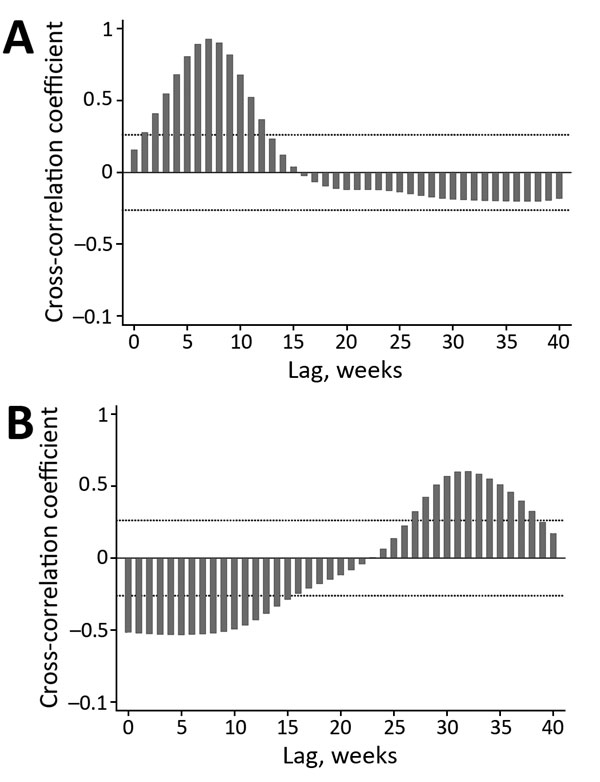Volume 22, Number 8—August 2016
Research
Time Lags between Exanthematous Illness Attributed to Zika Virus, Guillain-Barré Syndrome, and Microcephaly, Salvador, Brazil
Figure 2

Figure 2. Cross-correlation of acute exanthematous illness with A) Guillain-Barré syndrome and B) suspected microcephaly, Salvador, Brazil, 2015–2016, for a 5-week moving average. Dotted horizontal lines indicate 95% tolerance intervals for a null model of no association. Negative correlations observed at early lag periods are a function of large numbers of acute exanthematous illness cases that occurred early in the study period when there were no suspected cases of microcephaly.
1These authors contributed equally to this article.
Page created: July 15, 2016
Page updated: July 15, 2016
Page reviewed: July 15, 2016
The conclusions, findings, and opinions expressed by authors contributing to this journal do not necessarily reflect the official position of the U.S. Department of Health and Human Services, the Public Health Service, the Centers for Disease Control and Prevention, or the authors' affiliated institutions. Use of trade names is for identification only and does not imply endorsement by any of the groups named above.